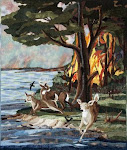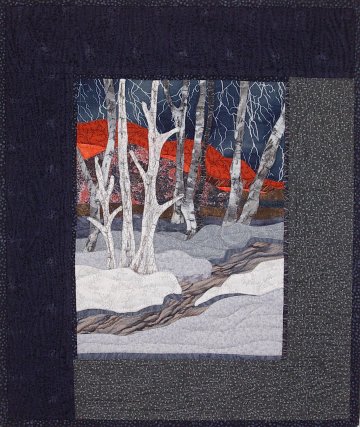The perceived lack of adequate time pushes the artist to run into the studio and just start flinging supplies around hoping something wonderful will come out of the chaotic frenzy. Plowing full steam ahead may lead to spending time and money on a project that once finished, may be very disappointing. Trying new techniques and approaches without the benefit of experience and, yes, practice, can be fun and exhilarating but expecting awe- inspiring results can be deflating and anything but great. There’s nothing wrong with playing with your favorite supplies just to see what happens, but winging it is not recommended as a full time pursuit. One of my favorite sayings is, Winging it can be an artist’s best friend or their worst enemy.
I am one of those people, who will try-out, rehearse a new technique or a new art supply just to see what happens. Can I use it in my art? Is it a viable alternative to some method I know and use frequently? Will the technique accomplish what I envision for an image? Mostly, do I understand and appreciate the tar pit I may fall into if I use this technique?
Consequently, I make small samples before incorporating a new idea into a larger work. My example is Feather and Dot, 9" x 12". The smaller portion is 4" x 6½" and is the results of
 experimentation with a new supply in my arsenal. I like using tulle netting as shadows in my pictorials. I read about spraying tulle netting with "505® Spray and Fix", a temporary fabric adhesive, to position a single layer of tulle. I needed to know does it work? And, is it easier than another method of attaching netting? Yes, and the one pitfall is, the netting remained sticky to the touch for a very long time. Until the adhesive evaporates on tulle netting, it will attract dust, bits of thread and, I suppose flies and mosquitoes, although that did not happen.
experimentation with a new supply in my arsenal. I like using tulle netting as shadows in my pictorials. I read about spraying tulle netting with "505® Spray and Fix", a temporary fabric adhesive, to position a single layer of tulle. I needed to know does it work? And, is it easier than another method of attaching netting? Yes, and the one pitfall is, the netting remained sticky to the touch for a very long time. Until the adhesive evaporates on tulle netting, it will attract dust, bits of thread and, I suppose flies and mosquitoes, although that did not happen. The lessons learned were the advantages and disadvantages using 505® spray on some textiles. Making a small sample meant I didn’t lose 10 days on a larger piece because of tacky tulle netting. I also learned to place whatever I wish to spray with
505® in the bottom of a cardboard box to contain the spray droplets from lending stickiness to other nearby surfaces. It has its uses, is a great product, but one must read and follow carefully the instructions on the label.
505® in the bottom of a cardboard box to contain the spray droplets from lending stickiness to other nearby surfaces. It has its uses, is a great product, but one must read and follow carefully the instructions on the label.




.jpg)



4 comments:
Carol,
Having come back from a meeting this weekend where I learned a new technique, this is great advice!
Carol, enjoyed your comments on Art Digest today. I did sign up for the sketch book in hopes that it would spur me, motivate me, into at least a weekly post to the book. I am taking a class in drawing for a week at J. C. Campbell next month and am hoping for inspiration there as well.
I love that you plan your time (Summer) wish I had that kind of self control.
I had a lot of fun at your reception, and will always appreciate your thoughtful eye and skillful hand. Wanted to use a few pics from your blog for a post I wanted to do. Is that ok?
good to know about the tulle being sticky on both side. I don't enjoy many adhesives actually... sure make life easier but I just don't like the added chemicals around me.
Leeanna Paylor
lapaylor.blogspot.com
Post a Comment